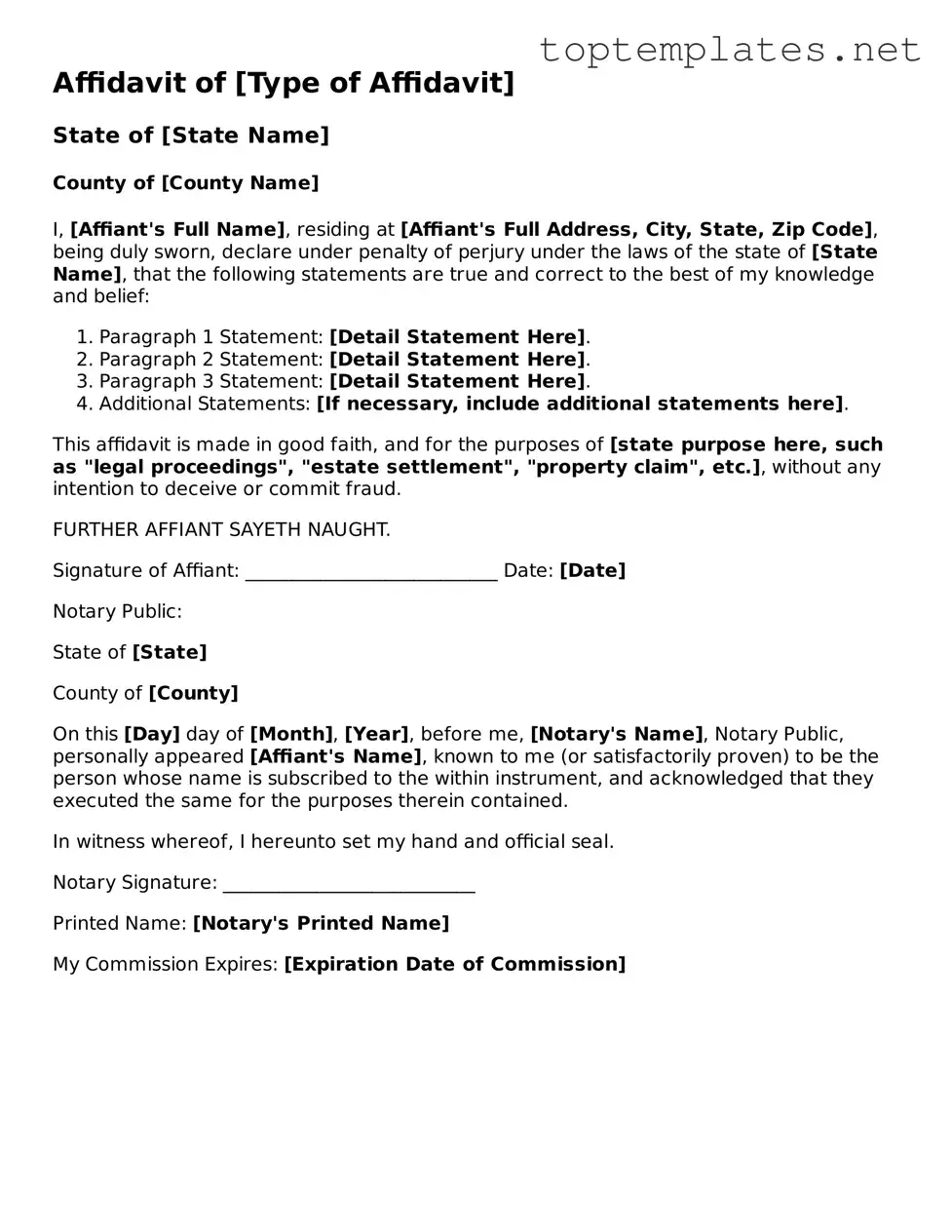What is an Affidavit form?
An Affidavit form is a written statement made under oath, used as evidence in court. Individuals use it to assert the truthfulness of their statements, presenting facts that the affiant believes to be accurate. A notary public or other official authorized to administer oaths must witness the signing.
Who can create an Affidavit?
Any individual who possesses the necessary competence to understand the importance of an oath or affirmation and is aware of the facts can create an Affidavit. Competence here means being of sound mind and legal age, or otherwise legally empowered to make declarations.
When might I need to use an Affidavit?
Affidavits are used in various circumstances, including but not limited to, legal proceedings, property disputes, and as confirmation of personal information (such as a change of name). They serve as evidence where testimonies are required but cannot be provided in person.
How do I ensure my Affidavit is legally valid?
To ensure legal validity, the Affidavit must include the date, the affiant's full name, the facts of the matter, and the signature of the affiant. Additionally, it must be notarized; this involves signing it in the presence of a notary public or an official authorized to administer oaths, who will also sign and seal the document.
Can an Affidavit be modified after it's been signed and notarized?
Once an Affidavit has been signed and notarized, it becomes a legal document. If any changes are required, a new Affidavit must be made. Modifying the original document after notarization would invalidate its legal standing.
Is there a difference between an Affidavit and a Declaration?
Yes, there is a distinct difference. Although both are statements of fact made by an individual, an Affidavit is notarized and thus carries more formal legal standing. In contrast, a Declaration may simply be a written statement without the requirement of being notarized. However, declarations are still subject to perjury laws if found to be false.
What happens if false information is provided in an Affidavit?
Providing false information in an Affidavit is considered perjury, a serious offense. Individuals found guilty of perjury can face significant penalties, including fines and imprisonment. It is crucial to ensure all information contained in an Affidavit is accurate and truthful.
Can an Affidavit be used in place of a testimony in court?
Yes, an Affidavit can be used in place of in-person testimony under certain conditions. Courts often accept Affidavits as evidence when live testimony is impractical or unnecessary. However, the opposing party has the right to challenge the Affidavit and request a cross-examination of the affiant.
